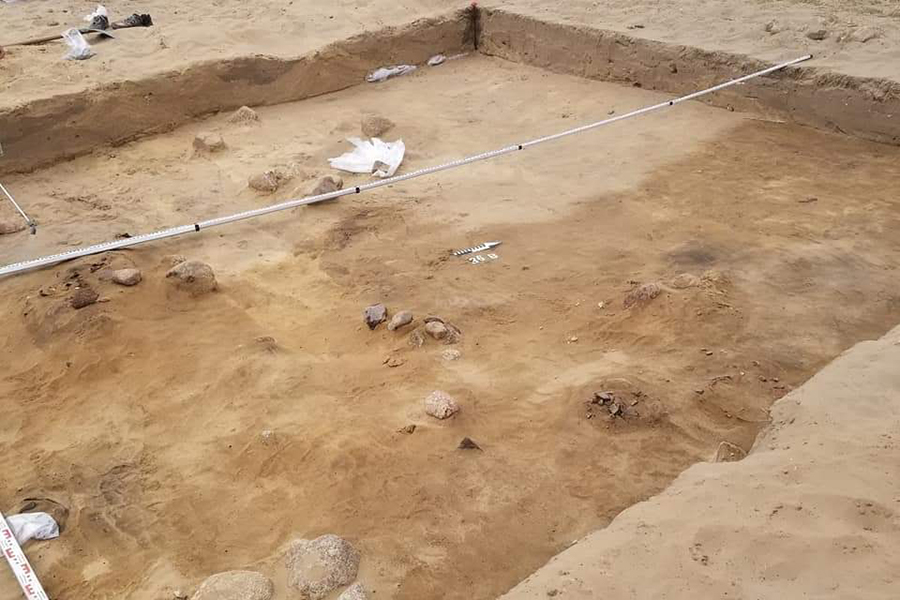
Part four of a continuing series about experiences on an archeological dig in Poland
Backpacks on, students of the Slavia Foundation’s field school trekked through the farmer’s field in Poland. For a total of six weeks, excavations would be continuing on a cleared piece of land that had been used as a cemetery twice before becoming farmland.
The site, Drawsko 1, had both Bronze Age (IV and V Period) cremated burials and Early Modern (16th-18th c) burials. Although the burials are easy to tell apart, as the cremated remains were in urns and the later burials were in coffins, everything had been mixed up. Stumbling into urns while digging for a coffin was common.
“But for me, the most interesting thing is that, you know, the same place was chosen by people during the Lusatian age and many years later, or a thousand years later,” said Tomasz Michalik, one of the archeology instructors for the Salvia Foundation. “And what is interesting for me is that what they [16-18th century people] thought when they were digging and found this pottery.”
During the Bronze Age in Poland, the Lusatian culture dominated the landscape. To bury their dead, people would burn the remains, cremating them. Then the burnt skeletons, which fragmented into small pieces, would be placed in a ceramic jar and buried. Often grave goods, like little jars and pots, were placed around the ceramic urns. Due to the cremation practices at the time, the remains were in pieces, as opposed to ash.
“It was cool because you could pretty much fit all of the bones in there [the urns] and there were still pretty big fragments,” said Lucia Valerio, an archaeology student. “So you can figure out if like the head was put in first or the feet.”
A thousand years later, the ancient graveyard was lost, and people in the 17th and 18th centuries used the area as a graveyard. When they buried their dead, the Bronze Age urns were found but were ignored or destroyed.
“We have one writing from 15th century, and this historian said that there was one village in Poland and that you can find growing pots on the soil,” said Maciej Gembicki, another archaeology instructor. “You can just gather whole pots from the soil in this magical land. Or they just thought that this is old pots, like garbage. It’s hard to say because we cannot reach these people and ask them.”
People in the 17th and 18th centuries used coffins to bury their dead in this area of Poland. It is not known what people of this time thought of the urns they found, however, during the excavation of the site it was not uncommon to find destroyed urns or pots on top of the coffin burials. This can be confusing at first, for things that are older are supposed to be found deeper in the ground than more recent items.
“The reason that we sometimes find urns inside of graves is that the people from the 17th century just dug a hole into these graves from Lusatian culture,” Gembicki said. “So they dig into and remove everything, and then they put in some skeleton, with a coffin of course, and they used the soil, mixed with pots, to fill the grave. Inside the graves everything is really mixed up, so you can find Lusatian graves, 17th century pottery, or other stuff.”
As time passed, the graveyard was forgotten. Before the accidental discovery of human remains in the early 20th century, farmers planted soybeans there. To this date, over 500 coffin burials have been removed from the site. Estimating the number of Bronze Age burials has been rather difficult, for they often just appear as small pieces of pottery.
Written by: Rachel Paul— science@theaggie.org



